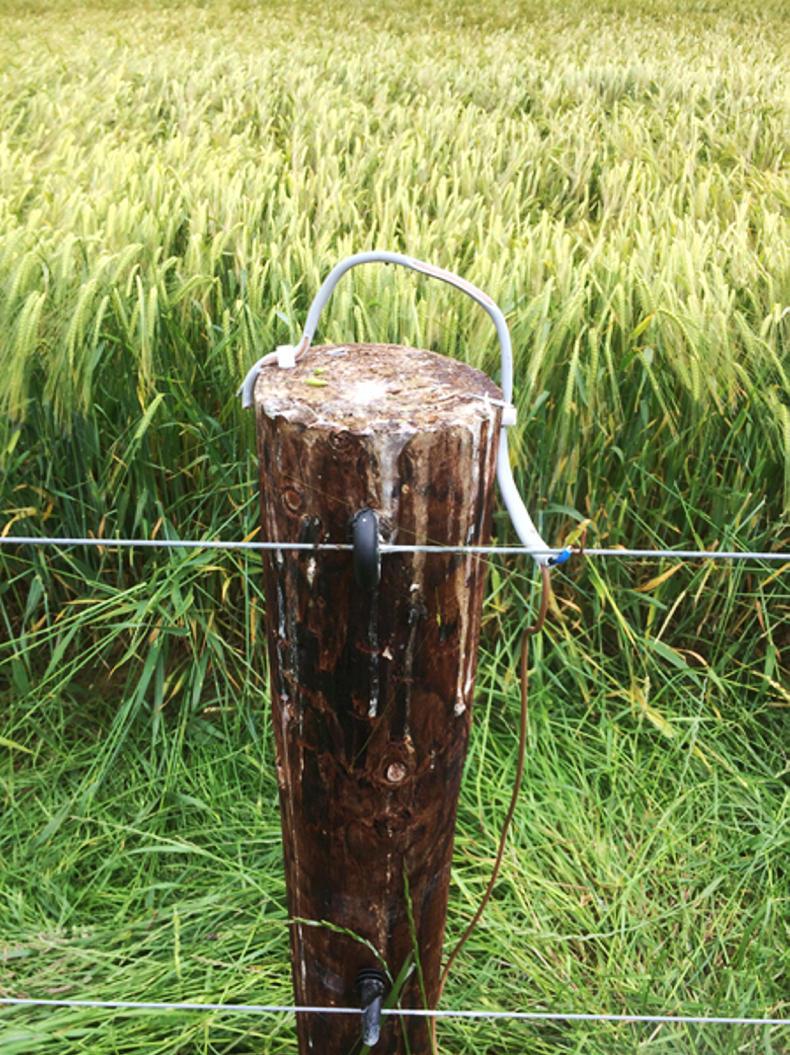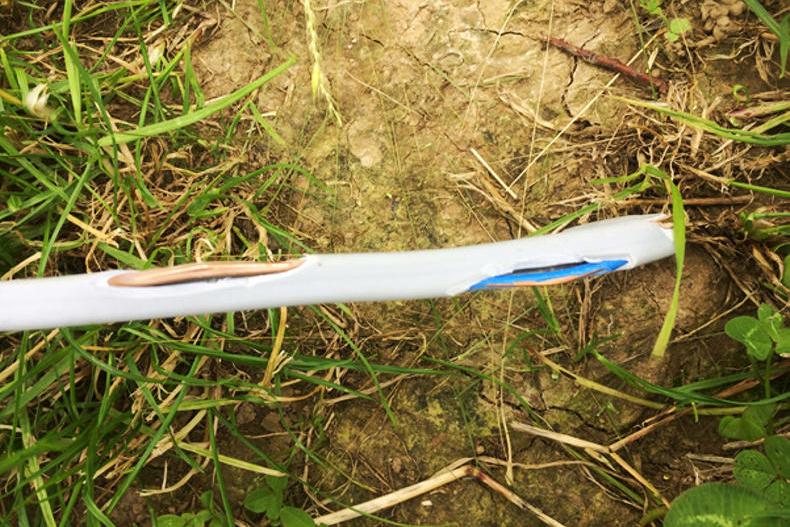As we enter a period of potential threat to our winter barley crops from crows, growers are advised to put precautions in place to prevent them getting a foothold in fields.
Damage is always most likely along by crop edges where adults can perch ahead of landing.
Power lines and poles provide such vantage points, but so do the fencing posts which are put there by farmers themselves.
And crows very often use these same posts as a stepping stone to drop into the edge of an adjoining crop.
It’s bad enough when one must deal with perching facilities that others put there, but when these are your own facilities then it’s even more painful.
Shocking solution
One Leinster grower recently sent me his solution to keep crows away from these transitory perching points. And it’s a shocking solution.
As most of these posts carry live electric fence wire for livestock control, this grower decided to fit a special roost on top of each post made from twin 2.5 electric cable.

One of the wires was taken down to the soil to earth while the other was attached to the fence wire.
The wire was attached to the top of the post in a loop, flat on top, to act as a string perch.
On one side of the flat cable the insulation was cut off to expose about 3cm of one of the copper wires. The same was done at the opposite side to expose about the same amount of the other copper wire.
The trick is to have these exposed areas about 30-40mm apart so that small birds will not touch both exposed copper wires at the same time.
Bigger birds of prey will not tend to perch on low posts. But the scouting crow is highly likely to wrap a foot around both of the exposed copper wires, with predictable consequences.
The technique is a deterrent against the initial attack and, as such, needs be short-lived. If crows don’t enter, there will not be a problem at that location.
It is cheap and effective and non-lethal, so the crows can come back after the crop is harvested and eat either grubs or seeds on the stubble and do the good that they mainly do.
The technique is now being tried around silage bales also.
Read more
Crop area falls for a third time in a row
Tillage crisis fund lands at last
As we enter a period of potential threat to our winter barley crops from crows, growers are advised to put precautions in place to prevent them getting a foothold in fields.
Damage is always most likely along by crop edges where adults can perch ahead of landing.
Power lines and poles provide such vantage points, but so do the fencing posts which are put there by farmers themselves.
And crows very often use these same posts as a stepping stone to drop into the edge of an adjoining crop.
It’s bad enough when one must deal with perching facilities that others put there, but when these are your own facilities then it’s even more painful.
Shocking solution
One Leinster grower recently sent me his solution to keep crows away from these transitory perching points. And it’s a shocking solution.
As most of these posts carry live electric fence wire for livestock control, this grower decided to fit a special roost on top of each post made from twin 2.5 electric cable.

One of the wires was taken down to the soil to earth while the other was attached to the fence wire.
The wire was attached to the top of the post in a loop, flat on top, to act as a string perch.
On one side of the flat cable the insulation was cut off to expose about 3cm of one of the copper wires. The same was done at the opposite side to expose about the same amount of the other copper wire.
The trick is to have these exposed areas about 30-40mm apart so that small birds will not touch both exposed copper wires at the same time.
Bigger birds of prey will not tend to perch on low posts. But the scouting crow is highly likely to wrap a foot around both of the exposed copper wires, with predictable consequences.
The technique is a deterrent against the initial attack and, as such, needs be short-lived. If crows don’t enter, there will not be a problem at that location.
It is cheap and effective and non-lethal, so the crows can come back after the crop is harvested and eat either grubs or seeds on the stubble and do the good that they mainly do.
The technique is now being tried around silage bales also.
Read more
Crop area falls for a third time in a row
Tillage crisis fund lands at last







 This is a subscriber-only article
This is a subscriber-only article






SHARING OPTIONS: